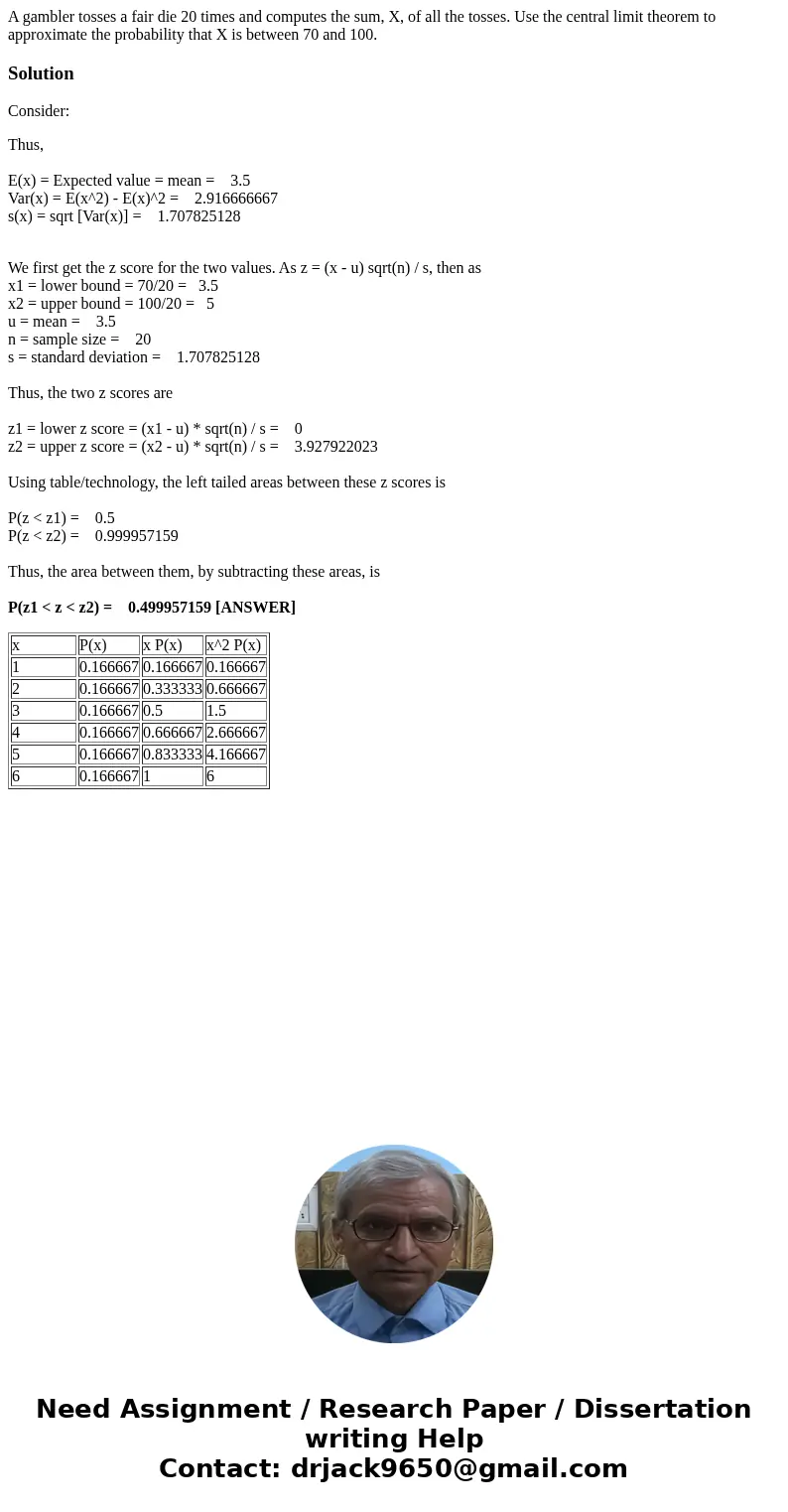A gambler tosses a fair die 20 times and computes the sum X
Solution
Consider:
Thus,
E(x) = Expected value = mean = 3.5
Var(x) = E(x^2) - E(x)^2 = 2.916666667
s(x) = sqrt [Var(x)] = 1.707825128
We first get the z score for the two values. As z = (x - u) sqrt(n) / s, then as
x1 = lower bound = 70/20 = 3.5
x2 = upper bound = 100/20 = 5
u = mean = 3.5
n = sample size = 20
s = standard deviation = 1.707825128
Thus, the two z scores are
z1 = lower z score = (x1 - u) * sqrt(n) / s = 0
z2 = upper z score = (x2 - u) * sqrt(n) / s = 3.927922023
Using table/technology, the left tailed areas between these z scores is
P(z < z1) = 0.5
P(z < z2) = 0.999957159
Thus, the area between them, by subtracting these areas, is
P(z1 < z < z2) = 0.499957159 [ANSWER]
| x | P(x) | x P(x) | x^2 P(x) |
| 1 | 0.166667 | 0.166667 | 0.166667 |
| 2 | 0.166667 | 0.333333 | 0.666667 |
| 3 | 0.166667 | 0.5 | 1.5 |
| 4 | 0.166667 | 0.666667 | 2.666667 |
| 5 | 0.166667 | 0.833333 | 4.166667 |
| 6 | 0.166667 | 1 | 6 |

 Homework Sourse
Homework Sourse